2.5 What are Stablecoins, Altcoins & Wrapped Coins?
Stop overpaying - start transferring money with Ogvio. Sign up, invite friends & grab Rewards now! 🎁
In this section, we’re going to talk about what are stablecoins, altcoins, and wrapped coins, and the differences between all of them!
The cryptocurrency world is full of industry-specific jargon. There’s a huge number of different terms for you to figure out and understand, when you’re just starting out with your crypto journey!
Many of these terms can get really confusing, and clamp up into one, huge mess. This is especially true when you consider all of the different cryptocurrency-related expressions and names! Well, today, I’m going to clear up some of that confusion for you.
In this section, we are going to talk about altcoins, stablecoins, and wrapped coins. First, I’ll tell you what each of these are, and give you some examples. Then, we’ll also discuss where are these crypto assets mainly used.
So, let’s get to it!

Video Explainer
Video Explainer: What are Stablecoins, Altcoins & Wrapped Coins?
Reading is not your thing? Watch the "What are Stablecoins, Altcoins & Wrapped Coins?" video explainer
What are Stablecoins, Altcoins & Wrapped Coins Explained!


What are Altcoins, Stablecoins, and Wrapped Coins?
To start things off, in order to understand these concepts better, we need to break down each of the terms, individually.
The altcoin definition is, honestly, the simplest of the three, as far as understanding it goes. However, it’s also a term that has a lot of history, and has changed a bit, over the years.

From the very origin of the term, “crypto altcoins” referred to all other cryptocurrencies that aren’t Bitcoin. So, whether it be Ethereum, Cardano, or Shiba Inu, all of these would be called “altcoins”, since they are NOT Bitcoin. Simple!
With time, however, the cryptocurrency market EXPLODED - there are new coins and tokens coming into the market seemingly every single day! This is why, at some point in time, people started using the terms “altcoins”, “best altcoins”, and looking at “where can I buy altcoins?”, in reference to all of the different cryptocurrencies that are not the top-10 assets - Bitcoin, Ethereum, Ripple, and so on. So, in other words, if a coin or token isn’t in the top-10 list, it’s considered an “altcoin”.
Not sure what’s the difference between crypto coins and tokens? Well, I have a dedicated section on this topic - make sure to check it out, and learn all of the essential differences!
Going back to what are altcoins, you can look at it like this: imagine that a candy shop stocks a single chocolate bar brand. It’s the most popular brand, and has been around forever. With time, there are new brands of chocolate coming into the shop, and gaining popularity - some become super-popular, while others come and go. So, at some point, everyone will know all of the main, most popular brands - the first one, and then a few others, that have managed to gain popularity over the years -, while the rest of the chocolate bars will be viewed as “alternatives”.
If you want to keep it simple, though, you may also view altcoins as “alternatives to Bitcoin”. So, whenever your friends say that they’re thinking about “investing in altcoins”, you will now know what they mean!
Moving on, what are stablecoins? Well, they’re a really interesting concept. While they have been subject to a lot of controversy, as of late, it’s worth stating that the premise behind stablecoins is quite complicated, and can be tricky to truly comprehend!
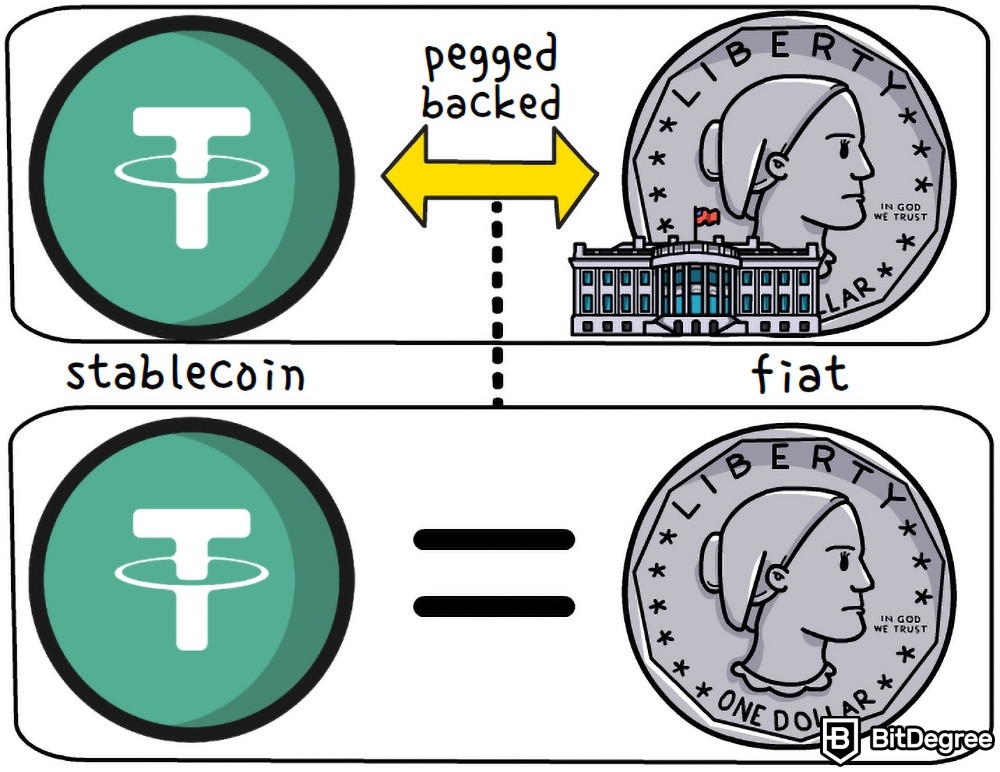
So, how do stablecoins work? Well, a stablecoin is a cryptocurrency asset that is pegged to a fiat (or, governmental) currency - in most cases, this will be the Unites States dollar. Here, “pegged” means that the value of a single stablecoin is “tied” to the dollar - one stablecoin will (theoretically) always be worth one dollar (or one unit of the currency that it’s pegged to).
Following that, the term “backed” will always come up when talking about stablecoins, too. Put simply, this means that, for every stablecoin issued, there’s going to be some sort of an established asset to back it up (most often, this would be the actual US dollar).
So, think about it like this - imagine that you’ve decided to sell concert tickets. A person can come up to you, and purchase a ticket for $1. Now, for the sake of this example, let’s just say that, due to some unforeseen event, half of the ticket buyers decided not to go to the concert, and are asking for a refund.
If you have all of the money that they’ve paid you for the ticket, and have used it to “back” the ticket purchases, you are able to issue refunds, no problem - if not, then suddenly, there’s no money for the customers to get back, and you start running into all sorts of problems!
In a very particular sense, the same sentiment is true with stablecoins. That is why all stablecoins need to be backed by governmental money, or some sort of a valuable, established asset. It’s also why there’s so much controversy in the world of crypto, regarding unbacked assets, and why people are questioning are stablecoins safe, to begin with.
It’s worth mentioning here that stablecoins are also segmented into a few different categories, as well - the most well-known of which these days is “algo-”, or algorithmic stablecoins. It’s a complex topic that deserves a section of its own, but essentially, to put it short and simple, algo-stablecoins make use of special algorithms in order to keep their price stable. As you might have heard with the widespread news of the Terra Luna events, this type of stablecoins is yet to be widely successful.
So, altcoins are all cryptocurrencies that are not Bitcoin, while stablecoins are special crypto assets that have their price pegged to a traditional currency, often the US dollar. What are wrapped coins, though?
To tell you the truth, wrapped coins are probably the most difficult to understand, if you’re just starting out with crypto! I’ll break things down as simple as possible, but do make sure to check out other sections in this Crypto 101 Handbook, so that you could get a better understanding of the topic, as a whole!
Now, imagine that you want to send a couple of packages to two of your friends - one who lives in another city, and another who lives in a different country. You want to send two of them the same thing - say, custom-made cups that you’ve handcrafted yourself!
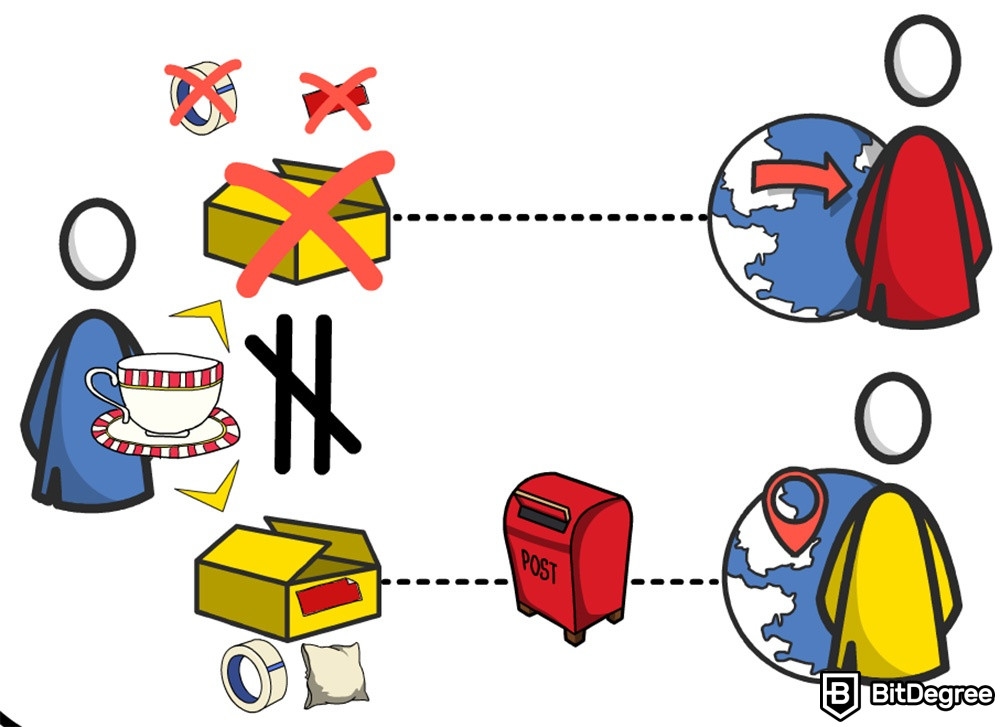
When it comes to your friend from another city, the process of packing the cup is pretty simple - you place it in a box, stuff it with cushioning, wrap everything up, stick on a shipment sticker, and send it from the post office. Simple!
However, when it comes to your friend from the other country, things are a bit more complicated. Perhaps there are specific methods of how the cup needs to be wrapped and packaged? Maybe there are some very particular ways of how you need to write the address on the package? Also, what about the box itself - perhaps you need to use a very specific type of a box, too?
All of that is to say - while you’re shipping the same item, to both of your friends, the packaging and transportation methods are going to be very different. In a way, this is kind of how wrapped coins work, too!
Wrapped coins allow you to transact with some specific cryptocurrencies on platforms that would otherwise not support the original coins. A wrapped cryptocurrency is like a written IOU - it has the same qualities as the original crypto asset, follows the same price fluctuations, and can be exchanged for the original at any point in time.
The simplest example here would be that of Ethereum, and the Trust cryptocurrency wallet. Ethereum has a network of its own, while the Trust Wallet is based on a different network. So, in order to be able to keep ETH in your Trust Wallet, you need an equivalent - this is where WETH, or Wrapped Ethereum comes in!
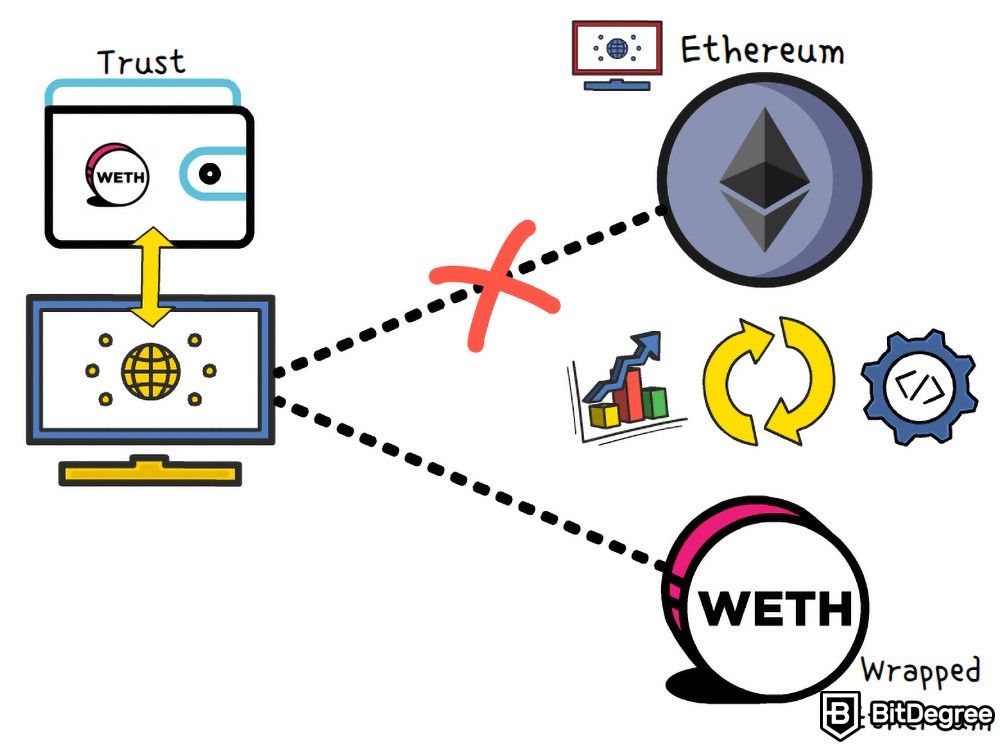
Admittedly, all of this isn’t all that easy to wrap your head around, no pun intended! That being said, as you start interacting with the cryptocurrency world, and encounter all of these aforementioned asset types, it will all start falling into place, surely!
Where are Altcoins, Stablecoins, and Wrapped Coins Used?
Up to this point, we’ve covered what are altcoins, stablecoins, and wrapped coins. Now, we definitely need to talk about where are all of these assets used, and why do they even exist, in the first place!
Continuing with the same order of things, let’s start with altcoins. In all honesty, altcoins are really self-explanatory - it’s like asking “what’s the point of all other cryptocurrencies, except for Bitcoin?”
The best altcoins relate to the different crypto-powered projects, various investment strategies, and are the fundamental element of decentralized finance and the cryptocurrency industry, as a whole! If altcoins didn’t exist, you probably wouldn’t be reading this section, in the first place!
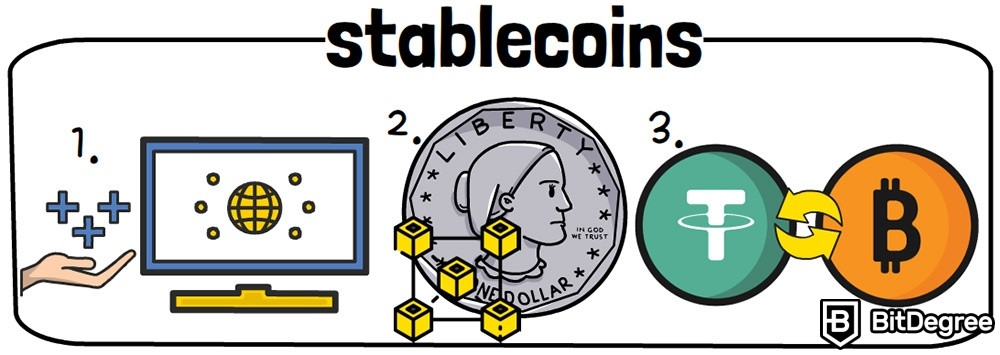
Stablecoins are a bit more tricky. They are mostly used for three different purposes - providing liquidity to cryptocurrency projects, representing traditional assets on the blockchain, and being used as a tool to acquire other cryptocurrencies (Bitcoin and altcoins) quickly.
All three of these use cases are super-important, and come with different pros and cons. For now, suffice to say that stablecoins help keep the cryptocurrency industry stable and liquid, and allow traders to invest in the market in a much simpler and more-straightforward manner.
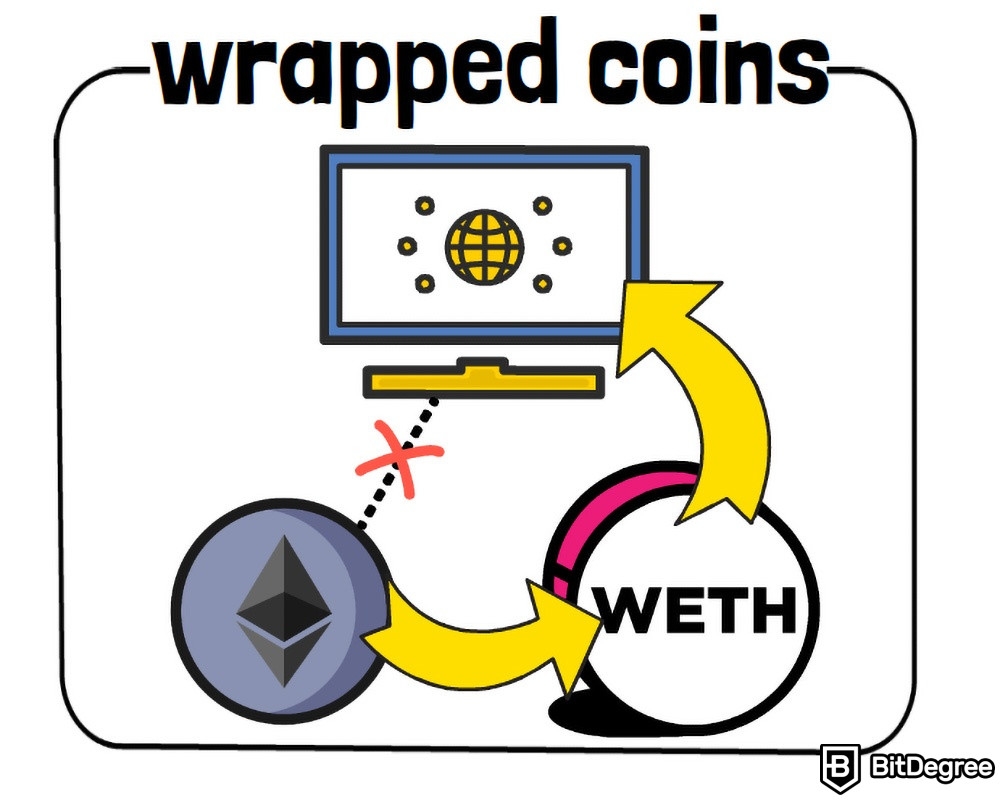
Now, as far as wrapped coins are concerned, I’ve kind of hinted towards their use case already, earlier in this section. These peculiar cryptocurrencies are used when you want to transact or store a specific crypto asset on a network or wallet that does not support that crypto. Thus, you “wrap” your coins, in a way that is supported by the network, and then are able to transact with it there.
So, I’ve told you about altcoins, stablecoins, and wrapped coins. By now, you should have a pretty solid understanding of what each of these three terms mean, and where they are used, in general. However, don't hesitate to read other sections in this Crypto 101 Handbook to get more in-depth knowledge about the whole crypto world.










